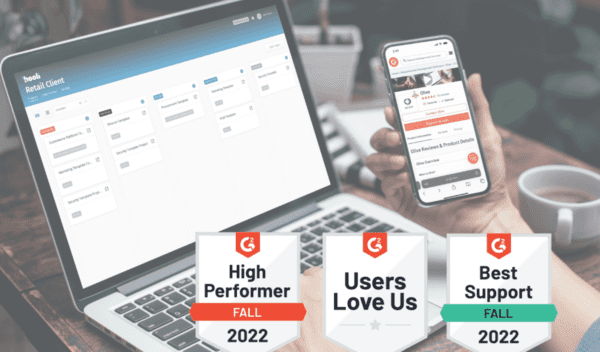IT Leaders are buying software and technology they don’t need, while salespeople reap the benefits of a broken vendor evaluation process.
In mid-2010, Lumber Liquidators completed the final stage of their switch to a new ERP. They had invested heavily in a system that would modernize their point of sale, inventory, warehouse management, and more. However, when Q3 rolled around, sales had dropped by 45%. Why? They chose the wrong ERP. Unfortunately, the software buying process is broken, and salespeople are in control of the process.
Every industry is going through what Lumber Liquidators went through back in 2010 – a digital transformation. We are all in a rush to infuse software and technological solutions wherever possible. Automation and AI are giving competitors considerable advantages, while efficiency and contactless delivery attract more customers.
The biggest obstacle to seamless transitions is that the process of buying software has damaging flaws. The urgency means that vendors are holding all the cards. If we slow down and do the required due diligence, by the time we come to a decision, it’s too late. Either way, poor decisions, and ill-fitted solutions are the results.
The Current Software Selection Processes
With businesses forced into a state of complete disruption over the past 18 months, early tech adoption matters. It is no secret. Companies that get out ahead of their competition are seeing a result.
The reaction means everyone else is making hurried decisions and placing too much trust in a broken system. Systems that previously worked in times of labored transformation no longer fit the needs of the business. Here are the current processes, and why they’re broken.
1. The ‘Get me the Best’ Approach.
CIOs and IT are all too familiar with this approach. It usually starts with the “Who is the best on the market?” question.
Then, the procurement manager is expected to find the vendor with the best reputation and usually the highest pricing. Once found, you schedule a demo and proceed accordingly.
This approach fails in most cases. It demonstrates a complete lack of depth and appreciation of the need. A superficial understanding leads to failure because it doesn’t address the problem in full. Solutions are often incompatible with the rest of your tech stack, and assumes that throwing money at the problem will fix it.
The most expensive solution is not always the one that will transform your business. In truth, if that is your choice, you need to take a step back and ask why change at all?
2. The Traditional Approach
The traditional approach is the one most common amongst CEOs, CIOs and IT departments. It follows the typical software acquisition funnel in the buyer journey.
A procurement manager starts with a discovery process of gathering the needs from management and end-users and analyzing each priority. You then compile a shortlist of options that service all priority requirements. A demonstration and rigorous vetting process begin before a decision is rendered and implementation strategies are developed.
This makes sense, right? Discover what the software needs to do and find the options that do it? Simple, or at least it should be.
Unfortunately for most, it is not that simple because there is an extreme lag between starting and finishing the process.
For some of Olive’s previous clients, it had been as much as two years from start to implementation. Even then, their previous implementations had failed. That is just too long. By the time you are rolling out the ‘new software,’ your needs, business, staff, processes, and priorities have changed.
What most CIOs are missing is that information has an expiry date. The longer it takes, the less current the software will be. In today’s accelerated state of digitization, this is only becoming more true.
3. The Outsource to an Expert Approach
There is nothing quite like having a listening ear to take your worries away. The IT consultants are a great addition and well versed in finding the perfect solutions. Working in the space you are looking for gives them the upper hand on most. They are familiar with capabilities and downfalls and have a vested interest in finding you the perfect solution.
Where they do tend to fall down are costs and time. The experts do not come cheaply and you don’t actually save that much time with them.
You still end up going through the traditional process. In turn, this leads to some outdated solutions that end up being far more expensive when the experts fees are taken into account.
4. The Market Comparison Websites
The final approach commonly used are the market comparison platforms. In theory, they are a fantastic resource but in practice, they are a touch disingenuous.
If you ask a trusted friend what dentist or physio they go to, you are in safe hands, but that is not what is happening in software. The current system removes your input, makes it more expensive and is rife with bias.
Market comparison websites exist for everything from hotels to car insurance to flights (Remember those?). In the case of purchasing software, they tend to be Capterra, G2, Gartner and Forrester. Each one provides an extensive list of options, but they are not fully transparent.
The options featured on these websites pay to be there. That means where they rank is not down to how ideal they are to your needs. It is down to what they pay the website to feature higher up. It is no different to being shown a menu of main courses the chef gets commissioned to make rather than what you actually like.
This approach is everything that is wrong with the buying process and the very reason for Olive. We want to put the power back in your hands with transparency and honesty.
Getting Your Software Selection Process Right
The very first thing to acknowledge is that having an IT, CRM, CMS, ERP or software solution that is 10 years old means you are behind the most innovative competition. You could quite possibly say the same for 5 year old systems because that is the rate of progression within the software space.
Every year, new solutions eradicate old inefficiencies with upgrade packages or new market players. That means you need a flexible IT strategy. We have learned harsh lessons on the merits of being agile through 2020 and 2022.
Secondly, get expert help—actual expert help rather than those commissioned to sell you on poor fitting vendors. Almost every area of your business has an expert tool or help to inform decisions. Your HR and compliance teams get legal help; marketing has CRM’s, CMS’s, web developers; even your CEOs have networking and advice groups.
Olive is that outside, unbiased expert. We don’t receive any commission from vendors, we are not influenced by anyone other than you, and we find solutions fast. CIOs and CEOs come to us because they know the wrong decision risks their jobs and companies. We have built a product that takes that responsibility seriously.
Use Olive to Transform your Software Selection Process
The inherent risks and problems within the process put buyers at a distinct disadvantage. You can go the traditional route and find a software that was perfect for the past. If not, you find an ‘expert’ who are influenced by the vendors more than they are by your critical business needs.
Olive is drastically reducing the wait times for software solutions because we know who will deliver for you!




